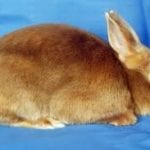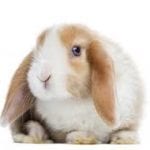Scientific Facts
| Common Name | Miniature Lion Lop |
| Body Shape | Compact |
| Size | 3.3–3.5 lb (1.5–1.6 kilograms) |
| Life Span | 10 – 14 years |
| Country of Origin | United Kingdom |
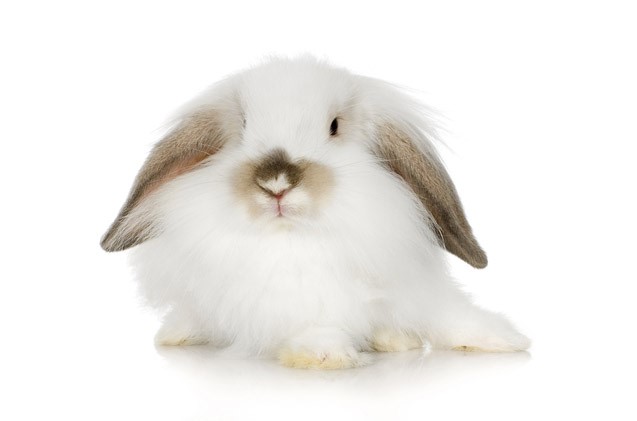
The Mini Lion Lop is the outcome of combining two extremely unusual breeds, the Mini Lop Rabbit and the Lionhead Rabbit, within one dainty, hairy bundle. They have a cottony, lion-like fur and the lovely bent ears of the Lop. They’re a rather new strain, originated in the U.K. in early 2000, but their distinguished and bizarre appearance has established their reputation on constant growth.
There are several essential items to think about before keeping a rabbit as a pet. Rabbits will need your care and time. They’re extremely friendly, inquisitive, and comical mammals and will live a sorrowful life if held restrained to an enclosure with little interplay. They will require space and chance to practice and investigate, and you’ll want to make a certain area has been rabbit-proofed toward gnawing and nibbling. A rabbit is a lifelong responsibility with several maintenances more than 10 years – wistfully, with their demand on the inflation, the abundance of rabbits relinquished to sanctuaries and exploits has likewise increased. They’ll demand particular veterinary attention, and in many countries, it’s ordered that they are injected.
Physical Description
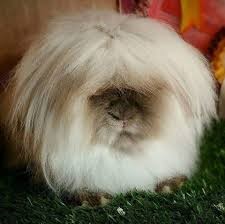
Generally, the Miniature Lion Lop is comparable to the Mini Lop, though some unique features present it outrank, one of which is the Lionhead Rabbit fur, alongside with the section of the breast that highlights more wool. This is why it can likewise be viewed as a tiny version of the Lionhead Rabbit.
This tiny rabbit’s body can be defined as a broad, well-muscled, strong, short, thickset, and firm. The hind limbs are reported as powerful, stocky, short, and carried identical with the rest of the frame. The backsides are plump, and the back is short. The front limbs must be short and straight.
The breast must be broad and deep, and there must be rounded sides where the thorax coincides with the rabbit’s collars, which are broad and strong as well. The end must be well wooled and straight, and there can likewise be a small jawbone in grown-up females.
The head must be broad and have a busty form, and there must be a prominent expanse in the middle of the mammal’s eyes. You will likewise see a wide snout, full jowls, and eyes that are bold, large, and bright. The collar is not completely apparent.
The broad ears should flop down on the surfaces of the head, and they should be displayed adjacent to the cheeks. Furthermore, the basal backbone of the rabbit’s ears will be noticeable across the crown of the head. The ears must be hairy, dense, curved at the tips, and broad. And the within the ears shouldn’t be apparent when staring at the mammal from any point.
Coat
The fur of a Miniature Lion Lop will be average in breadth, as well as light and thick with rollback and a lot of keeper fibers.
There will likewise be a more abundant fur that is approximately 2-3 inches long, and it must encompass the head. Additionally, the fur must form the pattern of a “V” following the rabbit’s collar, while bending over the head in the middle of the mammal’s ears. Some rabbits can also be double-haired.
The paws and limbs of the Mini Lion Lop should also be well cottony, and there could be a little elongated coat circling the thighs.
Colors
There are numerous shades that this lovely small rabbit can highlight, despite that it was formerly reproduced to merely display several distinct colors.
The major colors for the Miniature Lion Lop include black, agouti, blue or white with red eyes, sooty fawn, orange, butterfly, black otter, black fox, Siamese smoke, sable (including dark, medium, and light Siamese sable), smoke, blue point, seal point, chocolate, beige, blue, iron-gray, opal, and steel.

Common Behavior
The Mini Lion Lop is attention-seeking, cheerful, and whimsical. They like having loads of room and time to wander and relish a broad assortment of playthings, holes, and crates to fiddle with. They’re frequently friendly and even-tempered, but because they’re such a new breed, behavior can yet differ broadly within breeding divisions.
Rabbits are friendly mammals and are happiest when held in trios or couples. Rabbits may affiliate extremely strictly to one another, creating a near-intimate “linked pair.” Non-linked rabbits must have their enclosure and must be thoroughly administered until they learn to understand one another. A rabbit had solely will require loads of attention and time from their personal guardian; at any rate, human friendship can never entirely replace for the interplay they hold with one another. Preferably, a particular rabbit will be provided lots of free access to its master, whether that’s caressing on the lounge or chasing them throughout the pantry.
Rabbits are frequently whimsical and inquisitive, and you may discover that a free-wandering bunny will welcome your visitors at the entrance. They manage to go along splendidly with different family pets, though some felines and canines have an extraordinary prey ability and may behave vigorously onto the rabbit. Some bunnies are pretty reasonable and like discovering skills, and various rabbits can be taught to apply a litter crate. Rabbits additionally prefer to grind and drill, and it’s particularly relevant for their dental wellness that they hold something suitable to bite on. It’s likewise necessary that anything they mustn’t bite on is held from their range.
Rabbits may sprinkle to identify their area, though this response can be remarkably lessened or reduced by neutering or sterilizing. Neutering or sterilizing can likewise transpire in a more moderate mood and less behavioral matters.
Diet and Feeding Habits
Mini Lion Lop Rabbits are herbivorous, and their intake will largely comprise of vegetables, grass, and grains. The grass is essential for both dental health and digestive health. Grass hays such as oat, timothy, and orchard hay can be served in limitless supplies; however, alfalfa is rich in calories and must only be given periodically. Raw grains must likewise be delivered available every day – pick a grain rich in fiber and refrain blends that incorporate other foods like dried fruit, corn, or seeds.
Raw foods are likewise an essential element of your rabbit’s nutrition. Dark, leafy greens like spinach, spring greens, romaine lettuce, and some kale must infuse roughly 75% of the raw food presented to your rabbit regularly, with vegetables like summer squash, bell pepper, cauliflower, and broccoli making up the other 25%. Starchy vegetables and fruits must be restricted in the menu, though get excellent feasts! Make certain that all raw foods are cleansed completely, and unconsumed raw foods must be discarded at the period of the day.
Freshwater must constantly be possible, either from a stable water bowl or in a sipper bottle.
How to Breed
Origin
Jane Bramley, a breeder, mixed the Lionhead Rabbit with a Mini Lop Rabbit to create this peculiarly attractive breed. Jane’s breeding method served because the variation that’s accountable for delivering the Lionhead Rabbit its splendid fur and collar is produced by a powerful gene. In other terms, when you cultivate a full-blooded Lionhead Rabbit with a different strain, the baby will highlight that fur and collar. Consequently, the Mini Lion Lop can be originated by crossbreeding the Lionhead Rabbit with a Mini Lop, with a Dwarf Lops and Mini Lop/Lionhead hybrid, which would appear in the Dwarf Lion Lop Rabbit.
In 2006, this breed was admitted by the British Rabbit Council (BRC). It has been claimed in the UK by Jane Bramley, who has operated on obtaining admission for these lovable pets. The breed is not still identified by the American Rabbit Breeders Association (ARBA).
Breeding
Ovulation is urged by reproductive provocation. The reproductive development span for small breeds similar to the Miniature Lion Lop is 4 to 5 months. Males commonly demand more ease to culminate and frequently enter grown-up sperm numbers within 6–7 months.
Because of the territorial character of female rabbits, it is a conventional habit for the female to constantly be taken to the male’s enclosure. When the female is brought to the males’ enclosure, he immediately ascends her, does pelvic driving ending in the climax, and “drops” off. The entire performance may get fewer than 30 seconds and is frequently reappeared numerous times. When he is completed, the male must then be transferred, but several breeders will reestablish the male several hours succeeding to double the area of the litter.
Mini lop lifespan is 5 to 10 years. But can last relevant to 12 years if accurately heeded.
Pet Care
Providing Shelter
Mini lops are small animals, though they prefer to hold loads of expanse to bounce around. Seek for an enclosure or coop created particularly for rabbits. It must be 0.9–1.2 m (3–4 feet) wide, 0.6 m (2 feet) deep, and about 0.9 m (3 feet) high. The base and surfaces must be built of cable, not glass because the rabbit will require loads of fresh breeze to circulate throughout the enclosure. If you choose to work with an outdoor cage, set it in a dark place so that the rabbit doesn’t blister throughout the summer. You might require to warm the cage during winter if the condition flops low. It’s likewise essential to prevent possible predators apart. Birds of prey, felines, canines, and foxes are all considered vulnerable to a rabbit.
If you possess a cable enclosure, first place it with board lumber so that the rabbit’s paws won’t get captured, then embrace the lumber with grass or covers. This approach your rabbit will be ready to create a simple, comfortable den. Apply solely grass that is recommended for application in a rabbit enclosure. Never utilize stale hay or grass from a specialist you don’t recognize and support, and never apply cedar or pine wood peelings. The smog can damage rabbits’ inner glands.
If you install a tiny litter receptacle in the mini lop’s enclosure, he will console himself in that corresponding place rather of moving away, building removal much more comfortable. Though some bunnies may want to be taught. You can obtain a tiny, rabbit-sized litter receptacle at pet shops. Place the litter box with a sheet, then lay grass or paper beads on the cover.
Several masters of mini lops love to carry their rabbits out to lark. Restrict your rabbit’s activity place to one field that has been completely “rabbit-proofed” so that the mini lop won’t get injured. Discard electrical ropes and lines, delicate or bulky objects that could topple over, and other parts you don’t desire to be gnawed.

Providing Food
Rabbits both dwell in and consume masses of grass, so you must place loads of fresh grass in the enclosure regularly. Brome hay and timothy hay are excellent options for rabbit supplies. There’s no requirement to place the hay in a bowl; merely spatter it throughout the enclosure.
Rabbit grains include necessary minerals like fiber and protein. When your mini lop is yet a toddler, present it unrestricted grains. Mature mini lops can take 1/8 cup of grains for every 5 pounds of body mass. During the rabbit’s development, present raw vegetables to heighten its nutrition. 2 cups a day of turnip greens, spinach, and collard greens are the most suitable option; however, you can likewise supply your rabbit the particular carrot.
- You can likewise satisfy your rabbit with a little mass of fruit, such as cut-up strawberries, apples, and bananas.
- Do not serve your rabbit the following vegetables, which can harm its abdomen: rhubarb, beets, onions, peas, potatoes, iceberg lettuce cabbage, tomatoes, and corn.
- Never fill your rabbit with the following foods: dairy, chocolate, meat, grains, seeds, and any other made “human” menu.
Rabbits’ denture evolves continually during their endurance, and it’s essential to present them with something to nibble on so they won’t grow long and painful. You can purchase rabbit grinds at the pet shop, and provide your rabbit a distinct one every week or such.
Rabbits require admittance to loads of freshwaters. Get a water container intended for a rabbit enclosure (it’ll resemble comparable to those employed in hamster coops) or established some water in a shallow plate. Make sure you replace the water regularly and wipe out the plate steadily. Make sure you settled the bottle level enough for the mini lop to stretch.
Handling and Playing with Mini Lops
When you’re touching a rabbit, the primary practice to master is that you must never pluck one up through the ears. A rabbit’s ears are weak and delicate, and this could create lasting harm. Rather, set one hand beneath his back area and the other between his forelimbs. Take the rabbit adjacent to your breast and keep him there carefully. When you’re set to set him down, bend down and lightly relax him on the ground.
- Do not plunge your rabbit or allow him to drop to the platform from your arms. The shock could injure his limbs.
- Do not elevate your rabbit from the nape of his collar. Rabbits don’t possess special coats there as felines do.
Mini lops are rather firm as far as rabbits work, but they don’t fancy being touched harshly. Stroke your mini lop kindly on the sides, head, and back. Never throw him, shove him, or drag him by the limbs, tail, or ears. If your bunny is scared, don’t pressure him to perform.
Rabbits clearly adore to leap around, and they require to be equipped to do such for several hours regularly to remain robust. Bring your bunny outside of his enclosure and frolic with him periodically. If you hold a contained outdoor space, you can allow the bunny toy by himself, yet don’t make him out of your vision for too long.
- It is remarkably threatening to wander a rabbit on a lead! If a rabbit is startled, the edge can become winded around its collar. Rabbits can be frightened to death as well. A lead is disturbed, dangerous, and scary for your rabbit!
- Never allow your rabbit to operate outside the enclosure entirely abandoned. Retain felines, canines, and other predators apart.
Don’t allow your rabbit to become jaded in his enclosure. He requires exceptional details to investigate and nibble. Place several cardboard cartons or old receiver manuals in the enclosure for him to munch. You can likewise play with your rabbit utilizing a slack feline ball or toy.
Rabbits adore to act together, and your mini lop will be more satisfied with a buddy. Be certain to take another mini lop and a not different breed of rabbit. And make positive both rabbits are neutered or spayed, so you don’t settle with a litter of toddlers on your hands.
Keeping Your Mini Lop Healthy
A rabbit’s enclosure or coop must be washed out hebdomadal. Have a buddy manage your rabbit or place it in a coop or transport while you deliver the enclosure a meticulous cleansing. Toss out the former grass and newspaper, clean the enclosure with warm, foamy water, drain it, and stuff it with fresh grass and newspaper.
Rabbits don’t wish to be washed since they take responsibility for that themselves. Though, they do properly with light grazing. Apply a soft-fiber brush to get custody of your bunny’s coat every so often. Mini lops shed when they’re grown-ups, and when you notice this occurring, you can further separate the hair employing a wire brush.
It may be challenging to obtain a doctor who will watch at your rabbit since some pet doctors only handle felines and canines. Seek for a “foreign animal” doctor if your neighborhood vet won’t observe your rabbit. Bring him in for a yearly examination and any moment you remark manifestations of the disease, which could incorporate the following:
- A permanently tilted head
- A runny nose or eye
- Diarrhea
- High temperature
- Lumps or abscesses under the fur
- Red urine
- Refusal to eat
Availability – Where to Get One?
Make certain you acquire your rabbit from a legitimate house or reliable breeder, as you will possess a more solid view of the character and any wellness difficulties that may occur. You may be intrigued by the availability and the cost, though you do not hold any framework knowledge for the Mini lop.
The possession of the Mini lop will range from a pitch amount of $20.00 to $125.00, hinging against the nature of the rabbit you decide to own, where you purchase it from, and in the event it is pure-blooded. If you are engaged in having one as a pet, a pure-blooded is not claimed. Nevertheless, if you are thinking reproducing them, and/or displaying them, a pure-blooded will be required, and it would be essential to purchase the most excellent feature of rabbit that you can manage, and that is ready to buy.
On the Internet
All set for some entertainment? Mini Lop rabbits on social media are rising. A recording of Luna the Mini Lop consuming has more than 188,000 prospects. And Alfie and Biscuit’s Instagram account has more than 130,000 supporters, while Exempel the Mini Lop on Instagram has more than 178,000 fans.
What to assume when you take Mini Lop home
When you first take your current Mini Lop rabbit home, the rabbit will be very anxious and fearful. It may not consume or swallow for a day or such. This is entirely common, and you can assume to possess a pleasant and dynamic rabbit in several days. It is suggested that you drop the rabbit in your enclosure for most of the prime day. It will be alluring to get the bunny and lark with him, though he requires the freedom to adapt to his current surroundings. Following a day, you can start to carry him to your place and other spaces.
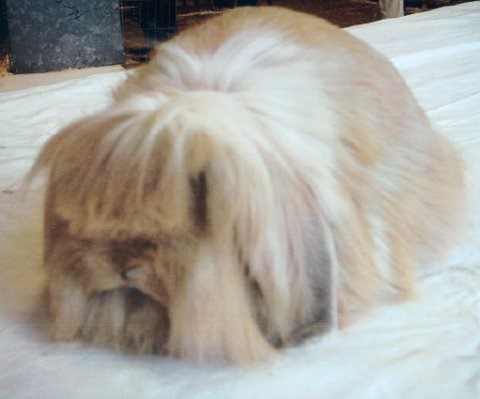
Essential Qualities to View for When Purchasing Display Bunny:
- A commonly compact, extensive body, wide through the collars and back legs. There must be enough intensity throughout the body, as well. Mark for well-filled collars that grow to circular, sleek back legs with great plumpness at the lower haunches. The broadest end of the body must be at the hindlegs, thining merely somewhat to the ridges. Mini lops must be powerful and dense, with healthy stability of the body. Females may have a jawbone that weighs with the rest of the rabbit.
- Mini lops must possess solid, stocky limbs with ample bone. Their limbs must be vertical. Disrupted marking rabbits should have all fingernails on anterior paws level, and all fingernails on back paws level, though a distinction between the back and front coloration is enabled.
- The head must be placed close to the body, with a strong, well-grown, and resolute appearance. There must be a small outward arch from the support of the ears to the nozzle. Mark for a head that is in equilibrium with the frame. The ears must flop perpendicularly down close at hand by the head, extending from a good basic rib of cartilage. The ear holes must be directed in approaching the head, swinging adjacent to the cheeks. Seek for well coated, curved ears with a good perspective of width and length. The general shape of the head and ears must match a horseshoe.
- Watch for a lustrous rollback coat that has good brilliance. It must be constant, and of average length, with good weight.
Things to Avoid:
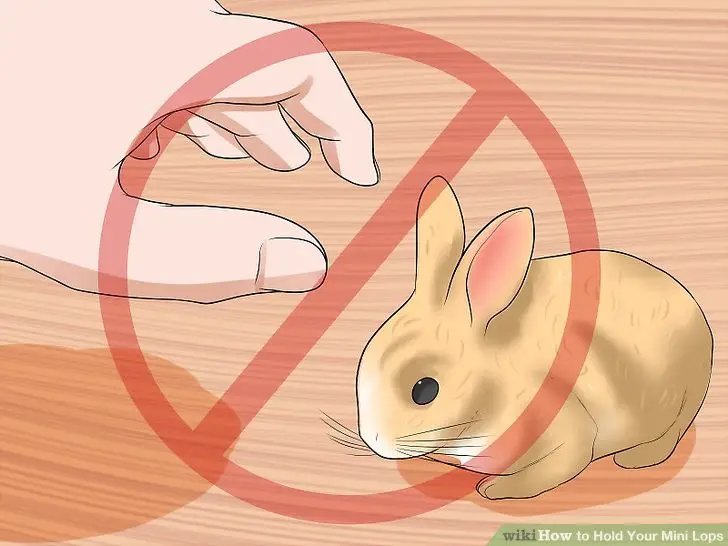
- A rabbit with a pointed nose, or narrow or long head. Folded ears, thin, thick, narrow, or poor ear carriage. Refrain ears that do not open approaching the chops, and ears with slim hair.
- Mini lops must not hold a body that is flat, long, and narrow. They must not be chopped or undercut at the hindlimbs. A large jawbone is an error.
- Mini lops must not possess a narrow bone. Examine the color pattern for fingernail color incompetence.
- Refrain a fur that is very short, thin, harsh, silky, or long. Several dispersed white coat in a stable patterned rabbit is a blunder, as are unfinished face impressing on a dilapidated modeled rabbit. Burst with such prominent shade on the point that the marking is not obvious is a slight mistake. Eye color that does not resemble adopted color blemishes, no head indicating on a damaged, and a dispute with less than 10% pigment, are rejections.
Facts
- Along with the American Fuzzy Lop, they are the smallest breed.
- Completely developed mass: 1.4 to 1.8 kilos (3.0 to 4.0 lbs)
- There is a lot of uncertainty with this, and if obtaining, you should examine what the seller/breeder is pointing to when they say Holland lop/Dwarf lop/Mini lop, etc.
- These rabbits are a particularly prevalent option for residence rabbits.
- They make very reliable home rabbits and friends and are accessible to house train.
- This rabbit has an outstanding personality, with a non-aggressive response.
FAQs
How long do mini lion lops live?
The life extent of a mini lop is 5 to 10 years. Some live longer to perhaps 12 years with the common period being 6 or 7 years, but the age of some rabbit is reliant on attention and, merely as importantly, nutrition.
How big do mini lops get?
Holland lops usually measure between 2.5 and 3.5 pounds, with mini lops sometimes increasing them in that area. Mini lops often weigh approximately 6.5 pounds. Notwithstanding the size variation, both breeds are small rabbits that hold pretty strong frames.
Do mini lops like to be cuddled?
Although Mini Lops are small, they are powerful and very whimsical but likewise greatly friendly and most companionable creatures making them a fabulous competitor for an indoor pet. Mini Lops are frequently very easy to heed for and are a favorite breed for pets because of their size and fun-loving character
Do mini lops shed?
When rabbits shed, they commonly begin by dropping hair from their head, which settles down the nape and rear and then down the sides of their body, ending on their rump.
Can mini lops eat cucumber?
Yes, but in extremely small quantities. Cucumbers can be a beneficial and enjoyable bite for your rabbit though not to a larger degree. Don’t serve him too great as it can produce digestive difficulties that could lead to runny stools (rabbit diarrhea) and a weak desire. Cucumber is not a nutritionally compact meal for your bunny.
How much should a mini lop eat?
When your mini lop is still a baby, give it unlimited pellets. Adult mini lops can get 1/8 cup of pellets for every 5 pounds of body weight. Throughout the rabbit’s life, provide fresh vegetables to enhance its diet.
